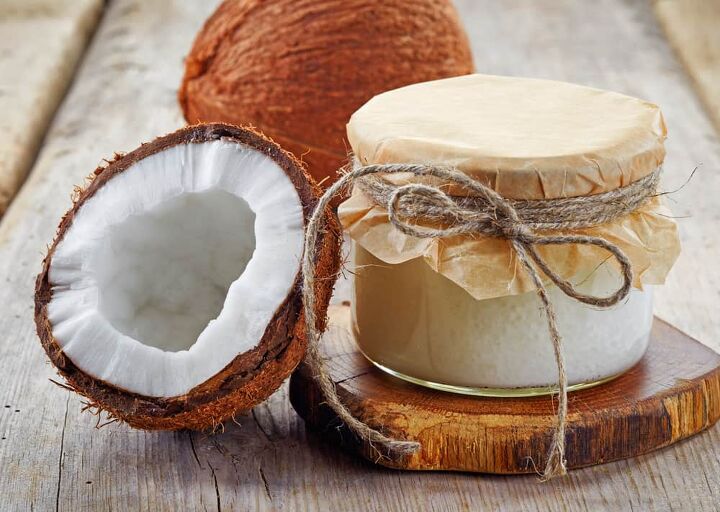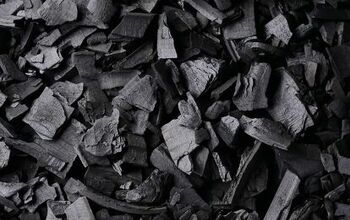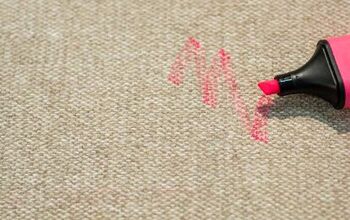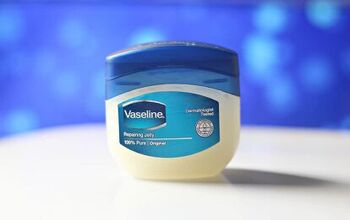How To Get Coconut Oil Out of Carpet (Step-by-Step Guide)

Coconut oil has become one of the most popular “superfood” buzzwords of the last decade, and rightfully so. It can be used for almost anything from massage oil to a delicious additive to your food. Unsurprisingly, it’s also found itself on many unsuspecting carpets across the country in unprecedented quantities. So, how do you get this oil out of your carpet?
Wipe the oil with a rag and sprinkle baking soda onto the carpet. Spray dish soap and water onto the stain or apply a carpet cleaner to the area. Blot the area with a rag and let it dry for up to an hour, then vacuum the carpet.
Oil stains of any sort are going to be a bit of a struggle to get out of a carpet. This is particularly true with an oil like coconut oil. To help you avoid a carpet mess, we created a guide about proper carpet cleaning.
Do You Need Carpet Cleaning Services?
Get free, zero-commitment quotes from pro contractors near you.

What’s The Best Technique For Removing Coconut Oil From A Carpet?
Unlike most other materials, removing coconut oil needs to have a multilayered approach if you want to be totally successful in keeping your carpet stain-free. That’s why you need to blot away excess, dry up the stain using an absorbent material, and then attack the stain with a good cleaning solvent.
Each cleaning method will work to lighten up the damage done little by little. When you do all three in rapid succession, you’ll see amazing results. Here’s how you need to work your cleaning magic, step by step:
- Start off by removing the excess oil by blotting it with a cloth rag. If you spilled a ton of oil, you can also sop some of it up using a spoon. The oil will pool up if you press down on the rug hard enough.
- Sprinkle an absorbent powder on top of the now-weaker stain. Most people use baby powder. Old school people might use talc or cornstarch, too. If you have a carpet extractor, you can use it instead of going to the next step.
- Let the powder settle in, then scoop up the powder. Vacuuming can help, if the powder is light enough in texture. However, most people will be perfectly alright with just scooping the powder up with a spoon or a cleaning pan.
- Repeat steps two and three at least once more. You need to put in some effort in drying out the stain a little bit before you try to use a cleaner on it. Otherwise, the cleaner won’t be able to remove enough of the stain.
- Choose your cleaning solvent. If you want to give the carpet a gentle attempt first, use two cups of water to one tablespoon dish soap. If you want a medium-strength solvent, choose a specialty carpet shampoo, a dry cleaning powder, or a commercial laundry detergent. If you want a more intense clean, use an enzymatic cleaner.
- Mix your cleaning solvent per the instructions on the label, or by the instructions we gave you. Each solvent will have its own usage and directions, just so you know.
- Apply the cleaning solution of your choice to the carpet stain. You might need to let it settle before you actually start blotting or scrubbing away.
- Rinse it with water, and then try a second cleaning solution if necessary. Most coconut oil stains will not need a second round, so you can usually stop here. However, if you do need a second round of cleaning, make sure not to use enzyme cleaner immediately after commercial cleaner. You will need some time before you treat your carpet with enzymes after a detergent-based clean.
- Rinse with water, and let dry. Once you have gotten rid of the stain, let your carpet breathe and then let it air dry.
Can WD-40 Remove A Coconut Oil Stain From Carpeting?
Though this is not considered to be an official use of the WD-40 lubricant, but it still has a strong reputation as a household cleaner. With most carpets, you will be able to get rid of oil stains without damaging the fiber. To use the WD-40 as a stain remover, apply the spray liberally and let it sit for a couple of minutes.
From there, take a sponge soaked in warm, soapy water and dab at the sponge. Gently cleanse the area, dabbing the towel until the oil gets soaked up. Once you have lifted up the coconut oil, rinse the area with cold water and fan dry.
Why Do You Need To Use Baby Powder To Absorb The Oil Stain?
Oil stains are ridiculously good at growing and this can make them somewhat resistant to being scrubbed away. When you use baby powder or cornstarch to absorb the oil stain, you’re not just removing oil from the area. You’re making an effort to contain how much oil can spread to other areas of the carpet.
Should I Try To Clean The Coconut Oil Stain Myself?
Admittedly, I know it’s tricky to get rid of oil stains. They’re considered to be some of the hardest stains to fight simply because oil has such a remarkable talent when it comes to spreading. However, you would be surprised at how much success you can have using household materials. It’s absolutely worth trying to clean the coconut oil up on your own.
While oil stains are hard, they are not impossible. Moreover, coconut oil is remarkably gentle on the fibers of a typical carpet. If there was one thing you would have wanted to have spill, it would be coconut oil.
When Should You Call Professional Cleaners?
For the most part, you only should call a professional cleaning company if you’ve tried everything to remove the stain without much success. Sometimes, you might also be unlucky enough to have a detergent worsen your carpet’s quality. If you ended up having a commercial detergent backfire and further stain your carpet, call a professional to find out what can be done to fix it.
Unless you have a silk carpet or a bearskin rug, you should be fine trying to do it all on your own. With that said, if you choose to call the cleaners, make sure you’re willing to spend between $50 to $150 to get your carpet’s stains out. Cleaners need to know what you did to try to fix the stain, too.
Do You Need Carpet Cleaning Services?
Get free, zero-commitment quotes from pro contractors near you.

Related Questions
Will using baking soda on a carpet completely remove an oil stain?
This all depends on the quantity of oil that was dropped on the carpet. For the most part, light to moderate messes can be stopped up with the use of multiple passes with baking soda. However, if you have a more severe stain or a coconut oil stain that has caked together your carpet, then you might have to employ a secondary method to remove all the residue.
Can you use a carpet extractor to get rid of stains?
A carpet extractor is a device that is meant to suck up liquid messes into its vacuum chamber, and it can be remarkably helpful with liquid stains. Using an extractor might not work as well on oil stains, but it can work wonders with spilled wine, urine, vomit, and sodas.If you aren’t sure whether it’ll work, give an extractor a try. Since it’s noted for being chemical-free, you won’t have to worry about wrecking your carpet’s fiber using it.
If you spill coconut oil on your carpet, can it cause your carpet to get moldy?
For the most part, coconut oil has a long shelf life that will help most uses avoid mold growth. However, if a large quantity of the oil gets on your carpet, it will act like any other spilled food imaginable. It will rot, and there could be a chance that you might see mold growth on your carpet if you don’t clean up the stain.If you see mold on your carpet near an oil stain, you might still be able to save your flooring. To do this, it may be best to call a professional carpet cleaner and explain the issue.

Ossiana Tepfenhart is an expert writer, focusing on interior design and general home tips. Writing is her life, and it's what she does best. Her interests include art and real estate investments.
More by Ossiana Tepfenhart



























